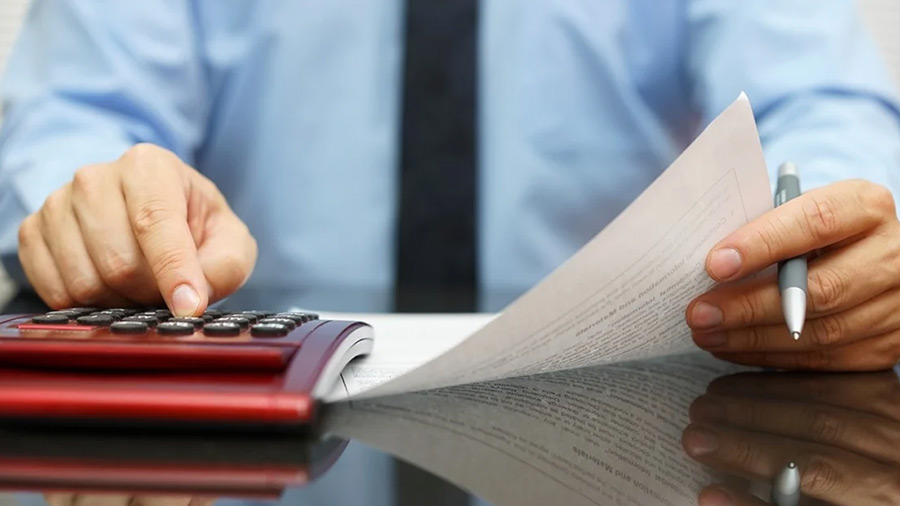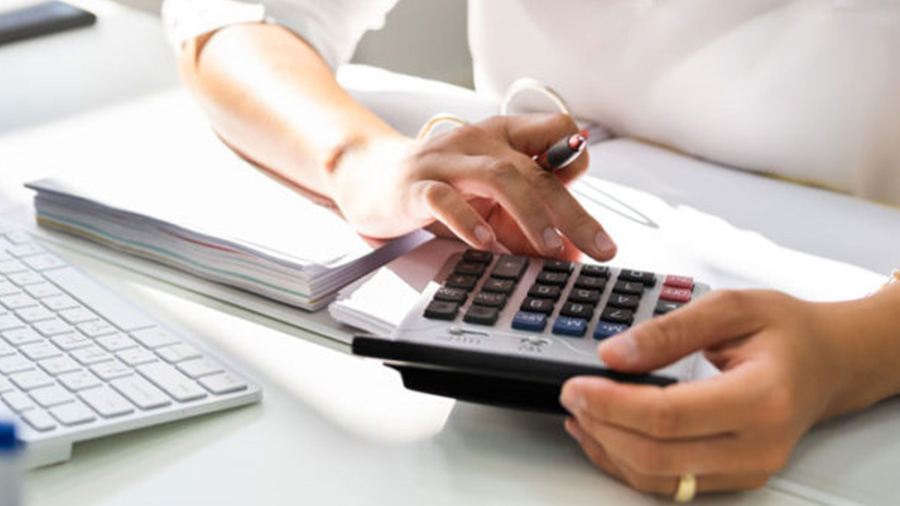Overview of VAT in Vietnam
Value Added Tax (VAT) is a broadly based consumption tax assessed on the value of goods and services arising through the process of production, circulation, and consumption. It is applicable to the majority of goods and services bought and sold for use in Vietnam.
All organizations and individuals conducting business and deriving incomes in Vietnam related to goods or services subject to VAT have to pay VAT regardless of whether they have Vietnam-based resident establishments or not. Goods that are sold for export and services and sold to customers abroad are normally not subject to VAT.
VAT is an indirect tax on domestic consumption applied nationwide rather than at different levels, such as state, provincial, or local taxes. It is a multi-stage tax that is collected at every stage of the production and distribution chain and passed on to the final customer.
For goods and services purchased from abroad, VAT applies to the duty-paid value of imported goods and services. The importer must pay VAT at the same time that they pay import duties to customs. For some categories of goods and services, which are subject to special consumption tax, VAT applies to the selling price plus the special consumption tax and environment tax.
VAT tax reduction extended to June 2024
The Value Added Tax (VAT), typically set at 10 percent, was initially reduced to 8 percent starting July 1, 2023, as part of the government's economic support measures. Originally slated for the latter half of 2023, this reduction has been extended until June 2024.
This VAT cut encompasses most sectors, with notable exceptions including telecommunications, information technology, finance, banking, securities, insurance, real estate, metals and metal products, mining, refined petroleum, chemicals, and products subject to excise tax. The current VAT reduction is expected to align with the principles of previous VAT cuts, continuing the government's approach to economic stimulation.
Two calculation methods for VAT
The VAT law provides two different methods of calculating the tax amount: credit method (also called “the deduction method”) and direct method, which accordingly determine who has to do tax declaration and finalization and who is eligible for a tax refund. A taxpayer can choose the appropriate calculation method based on the criteria described below.
Credit method
Most businesses are required to use the credit method, which applies to business organizations established under the Law on Enterprises, foreign-invested enterprises (FIEs), and foreign parties to business cooperation contracts (BCC). Such business establishments must fully observe Vietnamese regulations on accounting, invoices, and documents as prescribed by the relevant laws and register to pay tax according to the credit method.
Payable VAT Amount = Output VAT Amount – Creditable Input VAT Amount
The output VAT amount is the total amount of VAT on sold goods and services indicated in the VAT invoices. The creditable input VAT amount is the total VAT amount on goods or services purchased and on imported goods as indicated in VAT invoices and other relevant documents proving VAT payment.
In order to claim the input VAT, the taxpayers must obtain the proper VAT invoices from suppliers. In addition, the following conditions must be met:
- The VAT invoices for the purchase of goods and services are legal;
- Receipts of non-cash payments for the purchase of goods and services, except for purchases below VND 20 million (US$857); and
- Exported goods and services also require a contract signed with a foreign partner to sell, process goods, and provide services; transfers made to the Vietnamese bank account of the company or exporter; and customs declarations of exported goods.
The invoice must be filled out fully and properly, displaying all surcharges and additional charges (if any). Where the VAT invoice does not indicate the VAT amounts, the output VAT will be determined to be the payment price indicated on the invoice multiplied by the VAT rate.
Under the credit method, payment and declaration of VAT is made on a monthly or quarterly basis, where the taxpayer adds and subtracts the input and output VAT and pays or claims the balance to the competent bodies. As the situation is normalized every month or quarter, no annual VAT finalization is required at the end of the year.
Companies will be given a grace period of six months to correct errors in the declaration and deduction of input VAT. Where the taxpayer’s input VAT is not credited for three or more consecutive months, it can claim a refund from the tax authorities. In certain cases, exporters with excess input VAT credits exceeding VND 300 million (US$8,652) may be granted a refund on a monthly or quarterly basis.
Direct method
The direct method applies to business establishments, foreign organizations, or individuals having incomes generated in Vietnam without resident offices and who have not implemented the Vietnamese Accounting System (VAS). The direct method also applies to gold, silver, and gem trading activities; and those with less than one billion in annual revenue subject to VAT.
Payable VAT amount = Added value of sold goods or services* x VAT rate
*Added value of sold goods or services = Selling price – Purchasing price of goods or services
According to this method, VAT depends on total revenues for which the total is now known with certainty until the end of the accounting year. As such, the monthly payments are just provisional, and the total amount of VAT may be different at the end of the year. Therefore, when using the direct method of calculation, tax finalization procedures must be done within three months following the end of the year. Taxpayers adopting the VAT direct method should use sales invoices instead of VAT invoices.
Invoice requirements
All business enterprises in Vietnam, business households, economic organizations, as well as individuals paying tax using the declaration method must use e-invoices (except for certain cases).
To begin using e-invoices, businesses should register and obtain approval from the tax authorities via the General Department of Taxes (GDT) web portal.
There are two types of e-invoices:
- E-invoices with a verification code: Businesses that are ‘high-risk tax enterprises’, defined as those with equity less than US$635458.50 (VND 15 billion) and have certain other features, will have to use e-invoices with a verification code for 12 consecutive months. After 12 months, the tax authorities will reassess for possible approval to use e-invoices without a verification code.
- E-invoices without a verification code: Enterprises approved by the tax authorities may use e-invoices without a verification code. However, they must transfer all e-invoice data to the tax authorities.
Tax filing and payment
Pursuant to the prevailing regulation on Vietnamese tax management, the taxpayer must submit monthly VAT returns and settle tax payments on or before the 20th day of the following month or on a quarterly basis by the 30th day of the following quarter in localities where they conduct production or business. For companies adopting the direct method, the tax finalization must be made no later than the 90th day from the end of the calendar year. Payment has to be made in Vietnamese dong (VND) directly to the State Treasury in cash or through the taxpayer’s bank account.
Taxpayers that declare and pay VAT using the credit method and have dependent accounting production establishments (including processing and assembling establishments) located in provinces or cities other than the locality where they are headquartered shall pay VAT both in localities where their production establishment is based and where they are headquartered.
Dependent accounting production establishments that conduct cost accounting activities following the Vietnam Accounting Standard should register for tax payment using the credit method in localities where they conduct production activities. They should use value-added invoices as a basis for tax declaration and payments in these localities when delivering their semi-finished or finished products to other establishments, including their headquarters.
If a dependent accounting production establishment fails to conduct cost accounting activities, taxpayers at headquarters should pay two percent VAT (for goods subject to a VAT rate of 10 percent) or one percent VAT (for goods subject to a VAT rate of five percent), excluding the turnover of products they produce in the city or province where they are located. VAT amounts already paid by taxpayers for their dependent accounting production establishments will be deducted against their payable VAT amounts in localities where they are headquartered. However, if an enterprise does not generate tax payable at the head office, it is not required to pay taxes to the local authority where the production facility is located.
Tax Refund
Business establishments that pay VAT according to the credit method are entitled to a tax refund in the following situations:
- When exporters or taxpayers with new investment projects that pay VAT according to the tax credit method have their input VAT amounts not fully credited within a month or a quarter, they may have such tax amounts credited in the following period; in case the VAT amount is not fully credited after at least 12 months from the first month or at least four quarters from the first quarter in which the VAT amount arises, exporters, or taxpayers with new investment projects are entitled to a tax refund;
- A business establishment having registered to pay VAT according to the tax credit method is entitled to a tax refund if it has a new investment project and has an amount of VAT on purchased goods or services used for investment not yet credited and the remaining tax amount is VND 300 million (US$13,000) or more;
- Business establishments that export goods or services in a month or a quarter are entitled to a VAT refund on a monthly or quarterly basis if they have an input VAT amount of VND 300 million (US$13,000) or more that is not credited;
- Business establishments that pay VAT according to the tax credit method are entitled to a VAT refund if, upon ownership transformation, enterprise transformation, merger, consolidation, separation, split, dissolution, bankruptcy, or operation termination, they have an overpaid VAT amount or have some input VAT amount not yet fully credited;
- Foreigners and overseas Vietnamese holding passports or entry papers granted by competent foreign agencies are entitled to a tax refund for goods purchased in Vietnam and carried along when leaving the country;
- The VAT refund for programs and projects using non-refundable official development assistance (ODA) non-refundable aid, or humanitarian aid is stipulated as follows:
- Owners of programs and projects or principal contractors or organizations designated by foreign donors to manage programs and projects using non-refundable official development assistance are entitled to a refund of VAT already paid on goods and services purchased in Vietnam for such programs and projects; and
- Organizations in Vietnam using non-refundable aid and humanitarian aid of foreign organizations and individuals to buy goods and services used in non-refundable aid and humanitarian aid programs and projects in Vietnam are entitled to the refund of VAT on such goods and services.
- Subjects enjoying diplomatic preferences and immunities in accordance with the law on diplomatic preferences and immunities are entitled to the refund of VAT amounts indicated on added-value invoices or payment documents that indicate payment prices inclusive of VAT; and
- Business establishments possessing a VAT refund decision issued by competent agencies in accordance with the law and cases eligible for a VAT refund under treaties to which Vietnam is a contracting party.
Limits to VAT refunds
Decree 100/2016/ND-CP limits VAT refunds in the following situations:
- For those investing in the manufacturing sector, projects with combined natural resource and energy costs exceeding 51 percent of their good’s total costs will not be eligible for input VAT refunds;
- Investment projects where capital has not been fully contributed will be ineligible for VAT refunds;
- Investment projects involved in restricted sectors that are not compliant with up-to-date regulations will be ineligible for VAT refunds; and
- Companies that have accumulated in excess of 12 months’ worth of VAT to be refunded will be prevented from doing so. Instead, this amount must be carried forward.
To obtain a tax refund, an enterprise has to submit an application dossier to the tax authority in charge. Taxpayers who have properly observed tax law and have their transactions paid for via commercial banks or other credit institutions are eligible to obtain tax refunds before the authorities examine the application dossier. The tax authorities with jurisdiction over VAT refunds must approve the VAT refund within six working days from the date of receipt of a complete file for cases when a refund is carried out before the tax inspection. For other taxpayers, dossiers should be examined before a tax refund is made. The time limit for the resolution of a tax refund is 40 days from the date a complete tax file is received by the tax authorities.
In most cases, it usually takes two to six months from the date of submitting documents to the date of actually receiving the refund. In addition, a VAT refund often involves a tax audit to review the supporting documentation and invoices.








